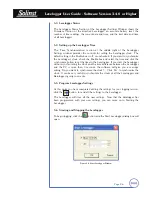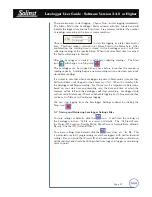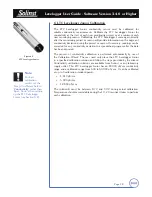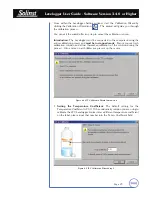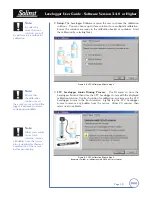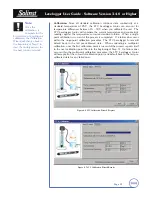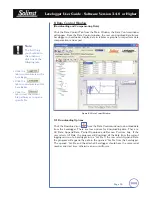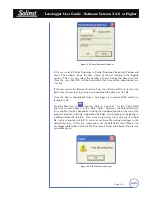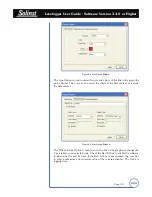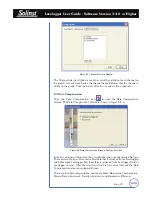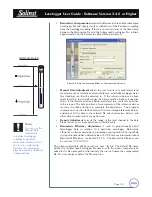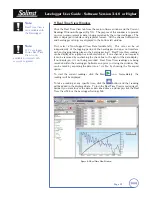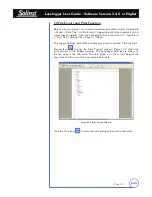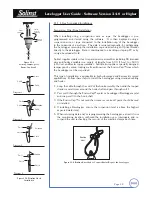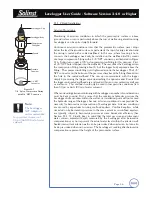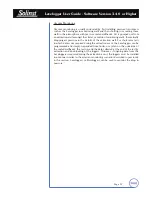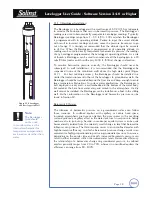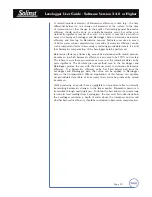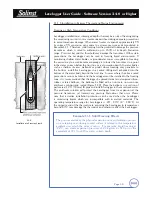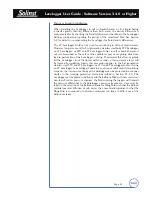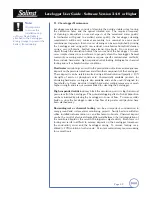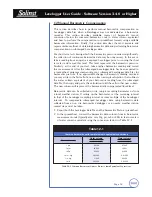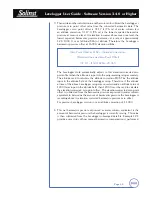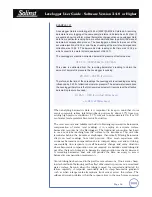
Levelogger User Guide - Software Version 3.4.0 or Higher
Page 40
• Barometric Compensation
requires the Barometric file and the submerged
Levelogger file and simply involves subtraction of the barometric reading
from the Levelogger reading. If there is an inconsistency of the time stamp
between the Barometric file and the Submerged Levelogger file, a linear
approximation on the barometric data will be performed.
Figure 8-9 Data Compensation Window - Compensation Selection
•
Manual Data Adjustment
allows the user to enter a manual water level
measurement as a reference datum or field zero, which all Levelogger water
level readings can then be adjusted to. If the reference datum is above
water level (e.g. top of well casing), the datum must be input as a negative
value. If the reference datum is below water level (e.g. sea level), a positive
value is input. The date and time of measurement of the reference datum
must be recorded and input to complete the adjustment. The program
computes a correction factor based on the time-stamped reference datum,
and adjusts all the data in the selected file after barometric, density, and
other data compensations are performed.
• Density Adjustment
corrects the range of the level channel in the data
file based on a user input adjustment of fluid density.
• Barometric Efficiency Adjustment
is used to proportionally adjust
Barologger data in relation to a particular Levelogger. Barometric
efficiency is often expressed as a percentage or proportion. The input field
is proportional and has a default value of 1.00. For more information about
Barometric Efficiency, see Section 11.1.3. The barometric efficiency can
be set from 0.01 to 3.00.
The compensated data will be saved in a new *.lev file. The default file name
will be the <Submerged Levelogger file name> with the word <compensated>
added to the file name prefix. Alternatively, the user can name the compensated
file. Do not change or delete the file extension.
Note:
You can use the
Manual Data
Adjustment
to display Levelogger
readings as depth-to-
water measurements from
the top of a well casing.
Perform this adjustment
after barometric and density
compensations.
Reference Datum

